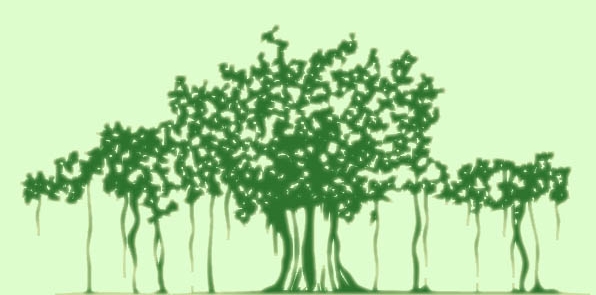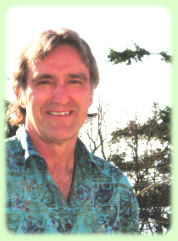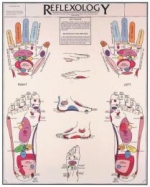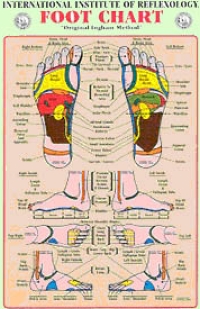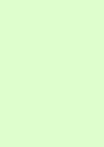 How will Reflexology help you?
How will Reflexology help you?
How does reflexology work?There is no broad agreement on how reflexology works. However, the one unifying theme is that there are areas ("lumps" or "grit") on the foot that correspond to areas of the body, and that by manipulating these one can improve health through one's own energy field.
The body contains an energy Field, invisible life force, or Qi, the blockage of which leads to illness and pain in a specific part of the body. Other proposed effects of reflexology include the release of endorphins (natural pain killers found in the body), the promotion of lymphatic flow in the body or the dissolving of uric acid crystals.
Where and how is the technique applied?
The technique the Reflexologist uses is (usually) applied to the feet and/or hands. Reflexology can be adapted to be done just about anywhere.
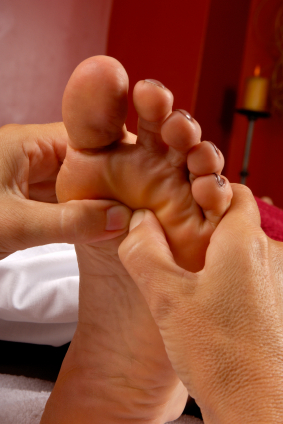 In a sense, all bodywork is reflexive therefore could be called reflexology. There does seem to be repeated patterns that exist throughout the body. The most effective focus for reflexology as practiced by Reflexologists is on the feet and hands.
In a sense, all bodywork is reflexive therefore could be called reflexology. There does seem to be repeated patterns that exist throughout the body. The most effective focus for reflexology as practiced by Reflexologists is on the feet and hands.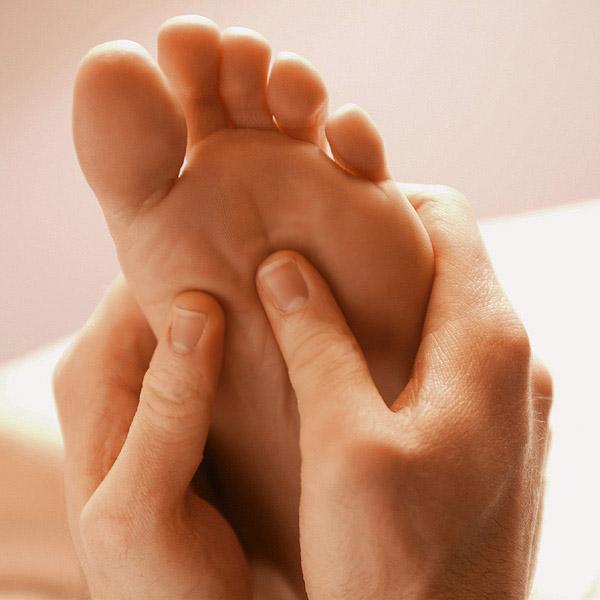 The Reflexologist applies pressure to the feet and hands using specific thumb, finger and hand techniques. Stretch, movement and rhythmic techniques are utilized to provide relaxation to the foot. Oils, creams and lotions are not generally utilized in traditional reflexology work. They may be used as part of the after-treatment to enhance the relaxation process. The Reflexologist may also soak the feet and/or hands before treatment to ensure they are clean.
The Reflexologist applies pressure to the feet and hands using specific thumb, finger and hand techniques. Stretch, movement and rhythmic techniques are utilized to provide relaxation to the foot. Oils, creams and lotions are not generally utilized in traditional reflexology work. They may be used as part of the after-treatment to enhance the relaxation process. The Reflexologist may also soak the feet and/or hands before treatment to ensure they are clean. What are the benefits of Reflexology?
In general terms the benefits of reflexology have to do with the reduction of stress. When one is in a relaxed state of body-mind, then, the inner healer becomes a stronger force in the persons life. The feet and hands are instrumental in determining the tension level for the rest of the body.
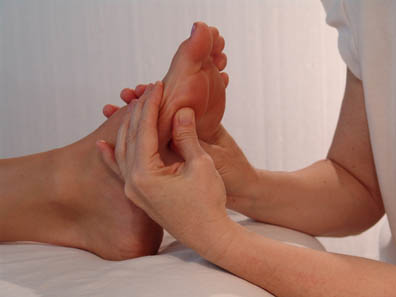 Massaging them in a reflexive manner helps to interrupt the stress signal and reset homeostasis, the bodys equilibrium. It is not certain that reflexology can benefit certain conditions and specific diseases. Scientific study is ongoing and as of yet there is no proof that there are definite benefits of reflexology in regard to illness and disease.
Massaging them in a reflexive manner helps to interrupt the stress signal and reset homeostasis, the bodys equilibrium. It is not certain that reflexology can benefit certain conditions and specific diseases. Scientific study is ongoing and as of yet there is no proof that there are definite benefits of reflexology in regard to illness and disease.Can a Reflexologist tell me about my health?
The Reflexologist makes assessments as the clients feet and/or hands are studied and monitored over time and evaluated. There are specific markers that a Reflexologist looks for as clues to determine treatments. These indicators are parts of the foot or hand that shows adaptation to stress and which can include, but not limited to, the following:
- visual signs such as foot abnormalities, callusing, knobby toes, bunion, etc.
- sensitivity to technique application perceived by the Reflexologist and/or expressed by the client
- a noted difference in breathing patterns as technique is applied
How often should I do Reflexology?
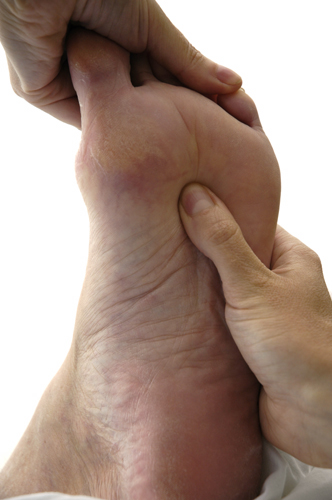 The treatments are more effective with consistency. In the beginning stages, it may be necessary in order to have any positive effect on altering deep seated patterns, to do reflexology once a day for a period of a week. Then the results can be reviewed and more sessions done as necessary to facilitate the healing process. Better results have been noted with regular and consistent sessions.
The treatments are more effective with consistency. In the beginning stages, it may be necessary in order to have any positive effect on altering deep seated patterns, to do reflexology once a day for a period of a week. Then the results can be reviewed and more sessions done as necessary to facilitate the healing process. Better results have been noted with regular and consistent sessions.The treatments require self help and family help as well as the guidance of a certified and qualified practitioner. The Reflexologist can provide the necessary boost to the process as a catalyst for the healing process and you and your family can provide the quantity to maintain the necessary energy required to break the stress patterns and free the client from long standing patterns that are not conducive to well-being.
Make reflexology a part your life. It is easy to do reflexology as well as doing other activities:
- Put a foot roller under your desk at work
- Massage your hands while waiting in traffic
- Use a vibrating foot bath with pressure points built in them
- Share in a foot massage with your partner while watching TV
What happens in a Reflexology session?
 Reflexology sessions in general last from 45-90 minutes. It is a clothed session with only the removal of shoes and socks as a requirement.
Reflexology sessions in general last from 45-90 minutes. It is a clothed session with only the removal of shoes and socks as a requirement. Reflexologists will use a chair and at times a table. Dry technique is common but some Reflexologists do use oil, cream or lotions. Please ask them to refrain from this if you do not want to have it used as it is not necessary to the effectiveness of the reflexology treatment. Your feet and/or hands may or may not be pre-soaked in a warm water foot or hand bath.
 Reflexologists use specific pressure, stretch and movement techniques and work through the foot or hand in a precise manner. Generally, the whole foot or hand is worked unless there are medical reasons that would not allow this to occur. While the Reflexologist works on one foot or hand, the other is covered by a towel so that it does not become cold. The client is often covered with a light covering to promote a level of safety and comfortability.
Reflexologists use specific pressure, stretch and movement techniques and work through the foot or hand in a precise manner. Generally, the whole foot or hand is worked unless there are medical reasons that would not allow this to occur. While the Reflexologist works on one foot or hand, the other is covered by a towel so that it does not become cold. The client is often covered with a light covering to promote a level of safety and comfortability.Music that aids the client in relaxation can be used.
Talking is permitted if it is necessary to aid in relaxation or if during the session feelings arise that need to be expressed. Otherwise, the politics of the world and the local sporting news is best left to discuss at other more appropriate times.
The Reflexologist always works within the clients comfort zone. Too much pressure causes unnecessary stress and is harmful and could lead to injury. However, pressure can be a personal preference and you should communicate with your Reflexologist if the pressure is too heavy or too light. If you have expressed that too much pressure is being used and the practitioner continues, then, stop the session. You are always the one in control of the session and demand that your wishes are respected.
The main goal of any session is complete relaxation. That may not always be achieved due to many factors but the client must always be able to note signs in that direction. There must be, at the very least, a feeling of relaxation at the end of a session. How long that relaxation lasts depends on the lifestyle of the client and the effectiveness of the session. Let your Reflexologist know what your ongoing response is to any session after it has ended and you are back in your normal daily living experiences. This information can be very helpful.
Enjoy the session. This is a healing and relaxation time and the old adage no pain, no gain has no place in a reflexology session.
